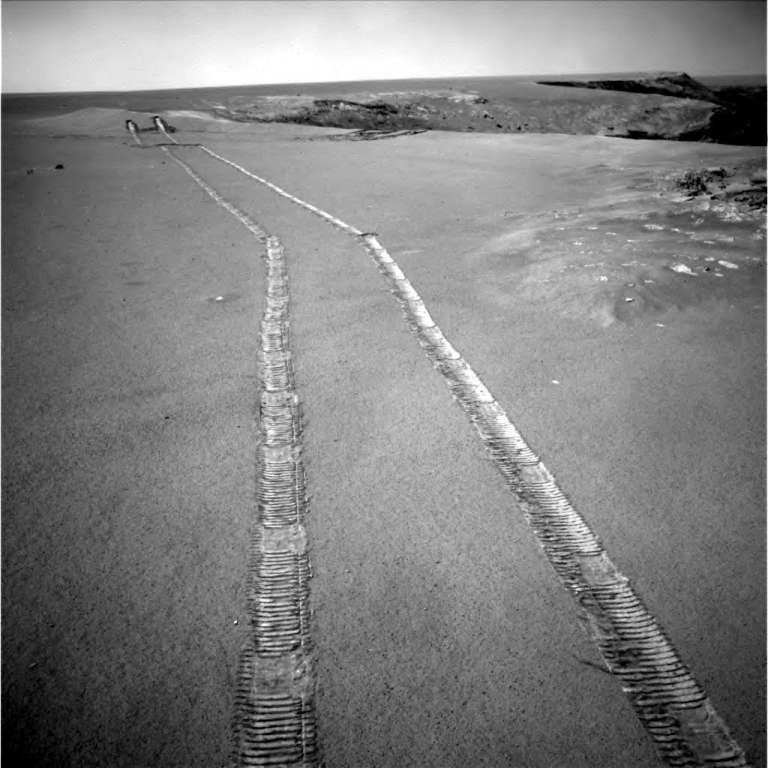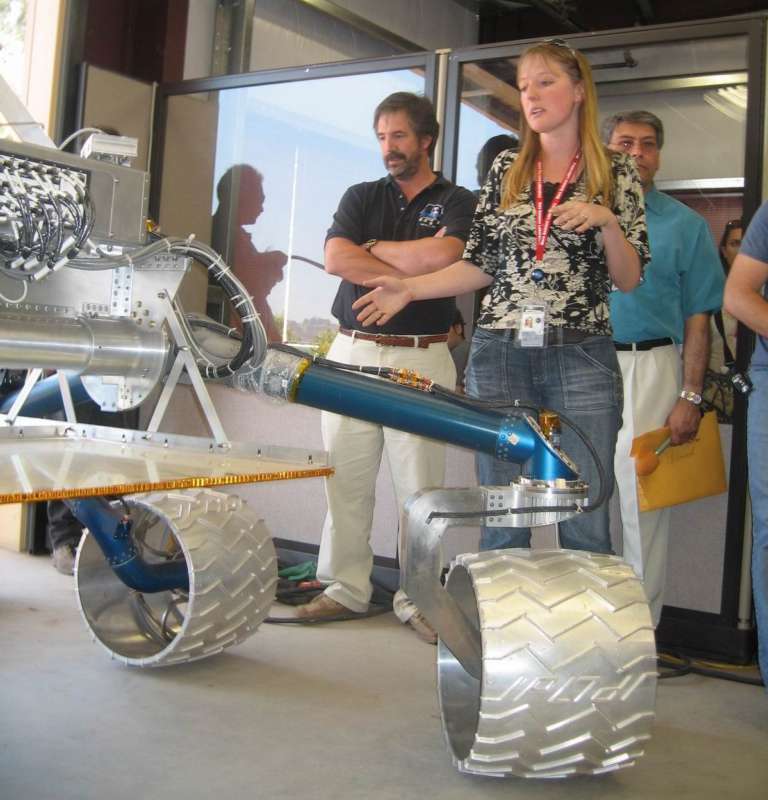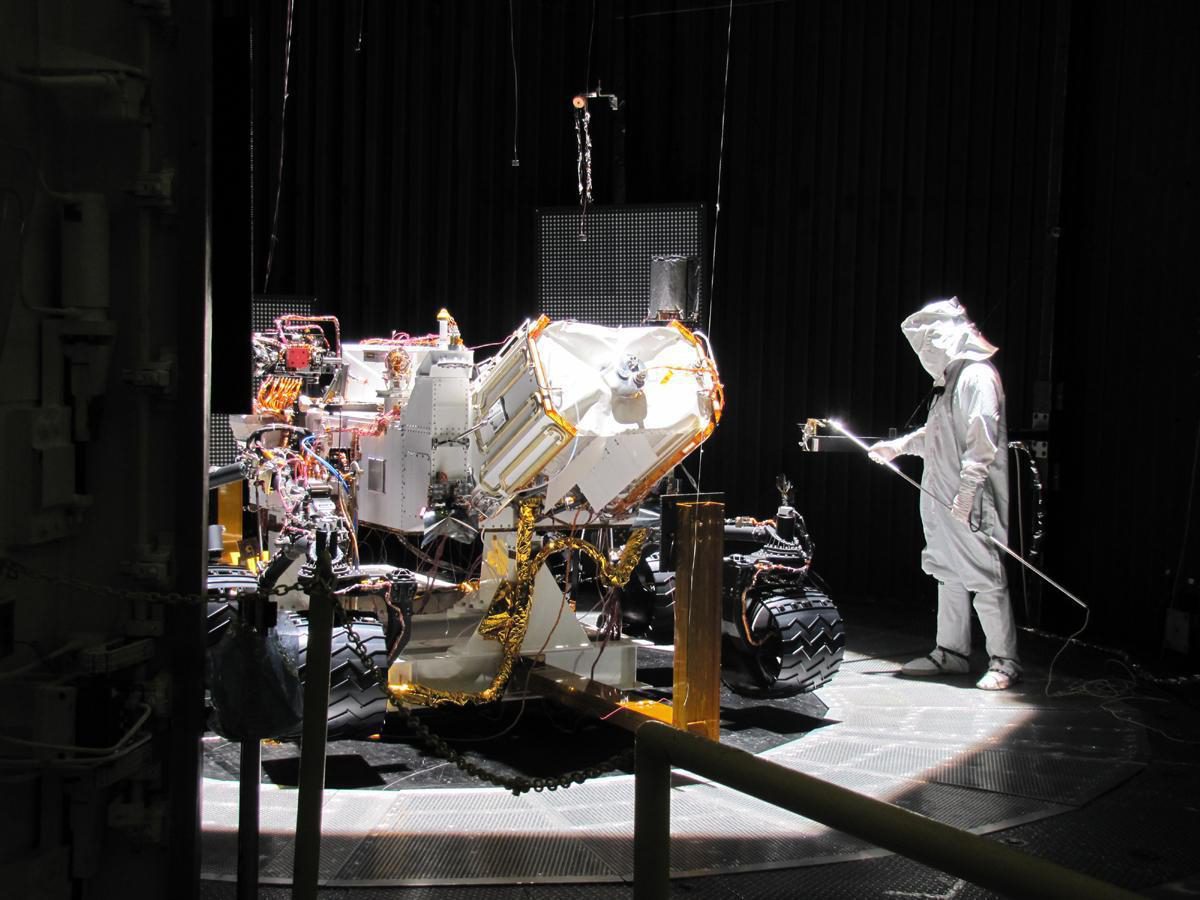Emily Lakdawalla • Mar 21, 2011
Neat video of Curiosity drive testing (plus a code-cracking challenge)
The Jet Propulsion Laboratory has posted a short video showing some recent testing of an engineering model of the Mars Science Laboratory in their outdoor Mars Yard; they're testing the performance of the rover's driving capability over slopes of varying steepness and covered with bedrock, compacted sand, and very loose sand.
Toward the end of the video, the narrator (rover mechanical engineering team manager Richard Rainen) describes the "visual odometry markers" in the wheels, and the video shows a closeup:

I had to chuckle at those "visual odometry markers." Before I explain why, I'll point out that they really are useful things to have in rover wheels. You can see how the repeating pattern of the "visual odometry markers" in Opportunity's wheels makes it fairly easy for both the rover and human operators to determine visually how far the rover has roved using rear-view imagery:

There's nothing special about the shapes of the markers in Opportunity's wheels; they are just square holes through the wheels through which the wheels were bolted to the lander during cruise and landing. But Curiosity didn't need holes in its wheels for attaching to any lander -- there isn't one. So the engineers got to make the markers in any shape they wanted to. Pretty much.
When I went to JPL back in June of 2007 to see an early "scarecrow" model of MSL put through its paces, I noted that the wheel cleats had a raised pattern of the letters "JPL," leaving a little stamp of the rover's birthplace everywhere it rolled. You can see it in this photo:

At the time I asked whether the real rover would have those wheels, and they said, no, they weren't going to get to advertise JPL with each turn of each of the rover's six wheels; the real rover would have some other pattern.
So it's very amusing to see what that actual pattern turned out to be. It may be obvious to some of you. I'll give a little hint: the holes are in a pattern of short squares, and longer rectangles. They're dots and dashes. It's Morse code. And guess what it spells out, in Morse code?
: . - - -
: . - - .
: . - . .
If you tuned in to JPL's "Curiosity Cam" last week you could have seen this drive-testing live. I'm sure it'll happen again. Right now the Curiosity Cam is offline, as there isn't much to watch; the rover is undergoing testing elsewhere. They have to test its ability to operate at Martian ambient conditions, like in the photo below, and they also have to put it on a massive virbation table (to simulate the rigors of launch and landing) and run it through cycles of extreme heat and cold (to simulate what it'll experience during its cruise to Mars). These last two types of tests are affectionately referred to as "shake and bake" testing.

The Time is Now.
As a Planetary Defender, you’re part of our mission to decrease the risk of Earth being hit by an asteroid or comet.
Donate Today

 Explore Worlds
Explore Worlds Find Life
Find Life Defend Earth
Defend Earth

